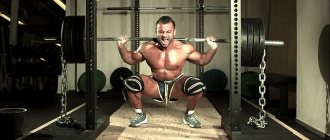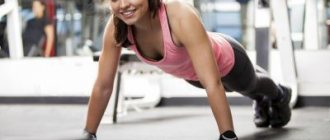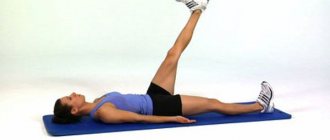What is diaphragmatic breathing
In order for oxygen to be absorbed into the lungs, there must be a significant difference between the external atmospheric pressure and the pressure that exists inside the lungs. Significantly lower pressure inside the lobes of the lungs compared to external pressure is created by an increase in the volume of the chest due to its expansion, including due to contraction of the muscles of the peritoneum and diaphragm.
The diaphragmatic septum lowers, increasing the “working space” in the chest cavity and allows the lungs to expand to a greater extent, which allows their lower lobes to be saturated with oxygen. The subsequent dome-shaped rise of the diaphragm, compressing the lower lobes of the lungs and reducing their volume, leads to exhalation.
It is easy for a neophyte to determine the type of breathing: when breathing with the help of the diaphragm, the chest visually remains relatively motionless. The chest type of breathing is characterized by intense expansion of the chest and is less optimal from the point of view of oxygen saturation of tissues.
This type of breathing is typical for pregnant women: the amplitude movement of the diaphragm is practically inaccessible due to the location of the gestating fetus. A more advanced stage of such breathing involves movement of the lateral and posterior walls of the abdominal cavity and “lowering” the breath towards the pelvic organs and kidneys.
Why is this type of breathing considered correct?
Experts are confident that the only correct type of breathing is carried out using the diaphragm; it is not without reason that newborn children breathe diaphragmatically, but gradually, as they grow up, they switch to a more shallow type of breathing. When breathing through the diaphragm, the blood is well enriched with oxygen, as a result of which the heart and lungs begin to work better. The massage of most internal organs carried out in the process of such breathing helps to maintain the good condition of the entire body. Breathing with the diaphragm has a particularly beneficial effect on the organs of the gastrointestinal tract, relieving such widespread problems as constipation or bloating. That is why people who want to lose weight are first advised to practice deep diaphragmatic breathing.
Proper breathing has an equally important effect on the condition of the skin. The fact is that if the lungs do not work enough, gas exchange is disrupted and our skin begins to perform some of the functions of the lungs, thereby provoking the appearance of acne, wrinkles and even serious skin diseases. From this it becomes clear that deep breathing with the diaphragm helps the skin remain young and beautiful.
Benefits of abdominal breathing
Among the most important functions of respiration, the leading place is occupied by the use of oxygen supplied from the external environment to the body for the oxidation of organic substances, and the subsequent removal of carbon dioxide from the body.
The amount of air inhaled during the diaphragmatic, or abdominal, type of breathing is 16 times higher than the same figure characteristic of other types of breathing, in particular chest breathing. This contributes to a quantitatively more productive oxidation by oxygen of various organic substances that make up the body.
Benefits of diaphragmatic breathing:
- In a unit of time, the diaphragmatic type of breathing, as a method of oxygen saturation, allows the body to obtain significantly larger volumes of this gas. This helps to activate metabolism and release chemical energy: the lower lobes of the lungs are much more voluminous compared to the upper ones. The chest type of breathing can use only a quarter of the capacity of the lungs.
- The movement of the diaphragm ensures frequent changes between high and low pressure, which in itself helps to increase the circulation of physiological fluids in the body. The movement of fluids and changes in intra-abdominal pressure act as a kind of massage for the organs located in the abdominal cavity and activate the removal of toxins and waste from the body.
- Diaphragmatic breathing, which is characterized by a calm pace and even rhythm, has a calming effect on the nervous system, which leads to the normalization of hormonal levels and related humoral processes.
Diaphragmatic breathing increases lung volume and better oxygenates the blood - The physiological norm is 8-12 breaths occurring within a minute. Most people who breathe through the chest method are subject to “rapid” breathing, taking up to 18 breaths per minute. This in itself is very energy-consuming, especially against the background of insufficient ventilation of the lungs. With much less energy expenditure, it is possible to increase the volume of the chest only by lowering the diaphragm.
- The downward movement of the diaphragm promotes active internal massage of the organs located in the pelvis: the bladder, rectum, and organs of the reproductive system.
- The bronchioles and alveoli are cleansed of accumulated toxic tars, including nicotine.
- The elasticity of blood vessels increases.
Contraindications for performing exercises
Diaphragmatic breathing, if performed incorrectly, including with excessively intense practice, can cause hyperventilation and damage to target organs due to high blood pressure.
Direct contraindications to abdominal breathing are:
- arterial hypertension;
- pregnancy;
- bleeding in the abdominal and pelvic organs;
- acute postoperative period.
Caution in learning and performing abdominal breathing requires:
- head and back injuries;
- osteochondrosis and radiculitis;
- pathologies in the development and functioning of the kidneys and liver.
Recommendations and preparation
Diaphragmatic breathing can be difficult for older people or those who are physically weakened for various reasons.
In this case, before using breathing exercises, it is recommended to undergo classical studies:
- take an electrocardiogram;
- carry out a functional test under load;
- conduct a clinical blood test;
- if cerebral circulatory disorders are detected, take a REO-encephalogram and conduct a fundus examination;
- in case of cardiovascular pathologies, obtain data from an echocardiographic study;
- in case of diseases of the digestive system, perform ultrasound and gastroscopic examination.
It is best to perform diaphragmatic breathing in the early morning hours to increase the effectiveness of exercise: at 5 a.m. the bioenergetic meridian of the lungs is most active. Exercises performed in the evening additionally act as a symptomatic remedy, allowing you to relieve unnecessary stress in the body and psyche that has accumulated during the day.
The training room should have fresh air of normal humidity at a comfortable temperature. The influence of attention-dissipating external stimuli should be minimized.
At the initial stage, the exercise is performed at a pace that corresponds to 12 to 15 inhalations and exhalations per minute. Gradually, you should come to perform 3 or 6 such cycles during the same time. Breathing less often allows you to saturate the body tissues with carbon dioxide, which helps to improve the health of the body.
Popular abdominal breathing exercises
At the initial stage of mastering diaphragmatic breathing, it will be easiest to resort to standard classical training schemes.
- Exercise while lying on your back. It is performed lying down, legs bent at the knees, feet pressed to the floor and loosely brought together. Procedure:
- It is necessary to calm the psyche and relieve unnecessary bodily tension.
- The left hand should be placed on the chest to control chest breathing, and the palm of the right should be placed on the stomach, which will allow you to monitor the movement of the walls of the abdominal cavity.
- Move the diaphragm downward, rounding the stomach in all directions, and inhale.
- Direct the movement of the diaphragm upward to the lower lobes of the lungs and, directing the anterior abdominal wall towards the spine, exhale.
An indicator of correct execution is the relative immobility of the left palm and the raising of the right palm with the movement of the abdomen. While performing the exercise, you need to breathe through your nose.
- Breathing while sitting is a more advanced stage in mastering various breathing techniques.
- In this case, diaphragmatic breathing must be performed while sitting, placing the pelvis and knees at the same level. It is permissible to sit either on a chair or on the floor, taking the Lotus position.
- After carrying out standard actions to relax the mind and body, concentrate your consciousness on the upcoming movements.
- Simultaneously with exhalation, lift the diaphragm up and draw in the abdomen.
- Relax your abdominal muscles and, lowering your diaphragm, inhale.
- Doggy breathing, which imitates the rapid and shallow breathing of a dog, makes it possible to more deeply feel the work of the diaphragm and lungs.
- The exercise should be performed on all fours.
- The tongue and abdominal muscles should be completely relaxed.
- Breathing cycles are performed frequently and shallowly.
- A more advanced stage of training is the abdominal breathing exercise with a load.
- This exercise is performed lying on your back with your legs bent.
- A load is placed on the stomach: for example, a thick book. This trick allows you to feel the movements of the abdominal muscles and “lower” your attention to the diaphragm area.
- Exercises for the respiratory muscles “according to Bubnovsky” will help develop those that provide both mixed and diaphragmatic breathing.
- "Pullover with traction" performed with an expander or rubber band attached to the horizontal bar. Sitting or standing with a straight back, overcoming the resistance of the expander, while exhaling, lower your arms to chest level. The arms are straightened at the elbow joints.
- For the same exercise, performed on a universal gym bench, the procedure is as follows:
- Lying on your back, place your feet bent at the knees on the floor.
- Straighten your arms with dumbbells, raising them above your head.
- Exhaling slowly, with the sound “Hhhaa,” lower your hands behind your head, stretching the intercostal muscles and lowering the diaphragm.
- While inhaling, return to the starting position, while the diaphragm retracts, activating the absorption of air from the external environment.
- The exercise is performed 15 times, with a weight from 2 to 50 kg in accordance with the degree of fitness of the practitioner.
- The “butterfly” from Dr. Bubnovsky’s arsenal is performed from a position similar to the previous one. The difference is that the arms spread horizontally, like the wings of a butterfly. Breathing is accompanied by the sound “Hhaa-a”.
Abdominal breathing exercises for weight loss are not highly specialized: excess calories are burned during active metabolism caused by a more intense supply of oxygen to the blood.
For many people, practicing diaphragmatic breathing regularly and thoughtfully has a cosmetic effect, coupled with the healing potential of these practices. The effectiveness of such exercises in preventing obesity is high.
One of the available popular weight loss systems based on abdominal breathing is Oxysize. The undeniable advantage of the complex is that it is suitable for pregnant women: the complex does not include intense sharp breathing and the same movements.
Jill Johnson, who created this system, emphasized the absence of pauses between inhalation and exhalation when the lungs are filled to the maximum. This filling is facilitated by the inclusion of the diaphragm in the breathing process and short pre-exhalations (pre-breaths), completing the smoother phases of breathing.
In Russia, one of the recognized weight loss systems based on abdominal breathing was created by Marina Kopran. Its complex includes exercises repeated in a cycle for 20 minutes, and is based on the Bodyflex and Oxysize systems.
- While standing or lying down, slowly inhale and draw in your stomach, releasing tension and allowing your stomach to bulge as you exhale. Repeat 3 times.
- Inhale through your nose, slowly filling your lungs with air. Exhale sharply, in 2 beats. Then inhale slowly again and repeat the cycle three times.
- Perform 3 inhalations and exhalations with the diaphragm.
- Inhale through the nose, exhaling in 2 beats: a short exhalation through the nose and a soft, long exhalation through the mouth.
The author also offers a version of the complex intended to be performed by trained participants, which includes a cycle of 12 exercises.
The basics of proper breathing when pumping the press
We need to take a closer look at how to breathe correctly when pumping the press. Initially, you must understand that proper breathing is an integral attribute of any training, which largely determines good results.
Correct breathing when pumping the press is, in principle, quite simple. It assumes something like this sequence :
- Take your starting position, that is, lie on the floor, bench or machine, depending on the exercise you choose and your preferred method of swinging the press.
- If you are performing a standard abdominal exercise, in which you need to lie on the floor, bend your knees and lift your body towards them, then, while lifting your body, you should exhale and inhale, returning to the starting position. Exhalation is always done with effort - remember this.
You need to exhale during the entire time of your rise, just as the time of inhalation should be equal to the entire time during which you lower your torso.
In fact, how to breathe when doing abs is not that complicated. Why is this technique correct? The fact is that it helps simplify the performance of all exercises and helps the muscles get less tired after training. Of course, pain after training in them is still possible, however, proper breathing will help moderate them, reducing them to the usual post-workout discomfort, which is considered completely natural.
Speaking about how to breathe correctly while pumping up your abs, you need to take a closer look at muscle contractions. When doing abdominal exercises, the abdominal muscles cannot contract completely because we have a certain amount of air in our lungs. Therefore, people who hold their breath too much during exercise cannot fully work out the muscles involved. Dealing with this is quite simple. Exhale completely when you reach the end point, that is, the maximum repetition of the exercise.
Among athletes, the abdominal muscles are often referred to as the “exhalatory muscles.” That is, we must exhale when these muscles are tense. This principle applies to any exercise. Any lifting - legs, knees, torso, body and legs at the same time - is done while exhaling, this is a general rule. Inhalation, as is already clear, is done when we return to the starting position. At this time, the abdominal muscles are stretched to the maximum.
The principle of how to breathe correctly when pumping the abdominal press determines 90% of the success of our training. And this applies not only to working out the abdominal muscles, but also to any other strength exercises, so it is important to control your breathing technique.
Additional exercises
There are simple techniques that allow you to master diaphragmatic breathing in a shorter time.
- Charging “Candle”, which is performed standing, sitting or lying down:
- Extend your hand forward, raising your index finger up and forming the rest into a fist.
- As you exhale, direct a stream of air to the first phalanx of the extended finger, ensuring that the moving air reaches this zone.
- After achieving this result, exhalation is activated, as if trying to extinguish a candle.
- Continue the exercise, moving the hand with an extended finger in an arc to the right and left.
- Warm-up “Simulated letters” is a logical continuation of the “Candle”: using an exhaled stream we write imaginary letters, from five or more.
- Warm-up “Banshee Exhale” is a sharp, powerful exhalation after holding your breath. The abdominal muscles, including the diaphragm, must be sharply contracted for such an exhalation.
- The “Sizzling” exercise is a sharp inhalation with the abdomen drawn in, followed by an equally intense exhalation. The breathing is accompanied by a hissing sound “Pffff”. After this, take a soft, calm breath and exhale the same way.
- Breathing while walking is performed using the force of the abdominal muscles as you exhale. During exhalation, you need to take 6 pairs of steps, achieving the feeling of “sticking” the abdomen to the spinal column.
- Having stopped, exhale with your stomach, slightly tilting your head forward. After a short cough, repeat the cycle twice while in this position and return to normal walking. After 30 sec. repeat the entire exercise.
Power training
Proper breathing is important not only during aerobic exercise. Anyone who has done strength exercises with weight lifting at least once knows that if you breathe incorrectly or even hold your breath, you will quickly become exhausted.
The standard is one inhalation per effort, and then exhalation. This rhythm helps the body to gather itself before working with weights and protects the lumbar spine. How to breathe while bench pressing? Exhale deeply and long as you lift the weight, then inhale at the top position or as you lower the weight to your chest. Remember that once the weight is lifted, it does not disappear anywhere and the body must be kept in constant tension. This mechanism is a bit like the one that comes into play during contact sports, and it acts as a safety net for your spine.
And don't forget to exhale! Holding your breath increases pressure in the chest. This is good for maintaining a stable position, but if you go too long without breathing, blood flow to the heart will decrease, which can lead to high blood pressure.
During FT training, our standard breathing pattern is inhale on the chest press and exhale on the chest press. Moreover, inhalation and exhalation are done as long as the bench press lasts.
Practices based on diaphragmatic breathing
Breathing practices are not anything innovative: the connection between health, consciousness and breathing has been known to people for a very long time. Among the most famous complex systems that solve health, applied and psychophysical problems are Chinese Qigong and Indian Yoga.
The term "Qigong" means concentrated and constant work with internal energy, called "Qi" by the Chinese.
In this practice, specific abdominal breathing not only allows for an active physiological effect on the organs and tissues of the body, but also helps to achieve maximum concentration and enter a meditative state. In such states, a person’s life potential and his psychophysiological capabilities increase significantly.
Traditionally, the exercises of the system are tied to the theory of primary elements, therefore they distinguish between active “fire” breathing, calm “water” breathing, and in terms of diaphragmatic breathing, there are practices of both direct and reverse abdominal breathing, differing in the direction of movement of the diaphragm on inhalation and exhalation.
| Type of breathing in Qigong | Characteristic |
| Direct abdominal | As you inhale, the stomach protrudes, and as you exhale, it retracts. |
| Reverse abdominal | Inhalation is accompanied by retraction, exhalation is accompanied by protrusion of the abdomen |
| Latent | Superficial, soft, thread-like |
Yoga asanas (basic poses) are directly related to abdominal breathing. The system has a special subsection: “pranayama”. This term can be translated as “breath control.”
In fact, Yoga solves problems similar to Chinese Qigong, but the set of exercises has a larger number of static asanas. Of the many types of Yoga, the most familiar to Europeans is Hatha Yoga, which is practically devoid of a metaphysical component and is aimed at improving the health of the body.
Modern techniques, based on traditional breathing practices, are often aimed at solving highly specialized problems, for example, getting rid of obesity.
Among the most popular are:
- “Queen of the Beach” , authored by American Pam Grout. The system is based on diaphragmatic breathing and consists of three exercises that make up a powerful “energy cocktail”.
- Methodology of the great singer Alexandra Nikolaevna Strelnikova , which involves a short inhalation and a long, soft exhalation. This system was originally created in 1973 to restore the voice, and the improvement of the respiratory system and cosmetic effect were a pleasant side addition.
Correct and regular practice, during which diaphragmatic breathing fully fulfills its functions, will certainly lead to the normalization of metabolic processes in the body, the removal of unnecessary psycho-emotional and psychophysical blocks, to the stabilization of the nervous system and a significant increase in the overall quality of life.
Author: Anin Valery
Article design: Mila Friedan
How to breathe correctly to speed up your metabolism? Breathing with the diaphragm. Scientists' opinion
The process of losing weight is closely related to metabolism. It depends on how hard or, conversely, how easily you lose those extra pounds. Unfortunately, with age, each person’s metabolism slows down and the body spends less and less energy on basic needs. And if at the age of 20 the body maintains a healthy weight, forgiving us for fast food snacks, then after ten years the intake and expenditure of calories must be carefully balanced so that the excess does not affect the figure.
In this regard, health experts began to talk about various ways to speed up metabolism. These include, for example, playing sports, long walking, contrast showers and meditation. And after a clinical study conducted by Yongsan University in South Korea, it became clear that simple breathing exercises also help activate metabolism.
Against tension and stress: why practice meditation
Eastern practices will make it easier to endure long-term self-isolation.
Clinical trial results
The Korean experiment involved 38 people who had no history of neuromuscular, orthopedic or cardiopulmonary disorders. The subjects were randomly divided into two groups. Those who fell into the first category deliberately practiced deep breathing through the diaphragm. And the participants in the second practiced with a feedback device that regulated the breathing rate using symbols. This simulator is usually used to treat patients with respiratory diseases.
Photo: istockphoto.com
After this, the experts compared the performance of both groups. It turned out that both diaphragmatic breathing and practice with a special apparatus have a positive effect on the maximum absorption of oxygen by the body. But only the first method increases the metabolic rate.
Losing weight without effort. Sleeping naked triggers fat burning
Scientists have found the simplest way to achieve slimness. How it works?
Deep breathing helps you lose weight
It turns out that breathing from the diaphragm helps you lose weight. The thing is that during such practice, the large dome-shaped muscle, which is located under the chest, is included in the work. This requires additional energy expenditure from the body.
In addition, during deep breathing, more oxygen enters the body, which increases blood flow, and this has a positive effect on the functioning of all organs and metabolism.
Photo: istockphoto.com
How to learn to breathe with your diaphragm?
This breathing technique does not require special preparation or much effort. You can do it in any position: sitting, lying or standing. Figuratively speaking, our main task is to learn to breathe from the stomach, and not from the chest.
To do this, place your hands on your stomach, on the area under the ribs. Take a deep breath into your belly for eight counts and watch how it inflates. The chest should remain motionless. Then exhale slowly for eight counts, again starting from the abdomen. When you're done, count to four and start the exercise again.
6 exercises that will speed up your metabolism for those who lead a sedentary lifestyle
Give them five minutes a day and feel the difference.
Even ten minutes of regular practice will help speed up your metabolism, improve your overall well-being and relieve stress. And this will have the best impact on your aspirations.











